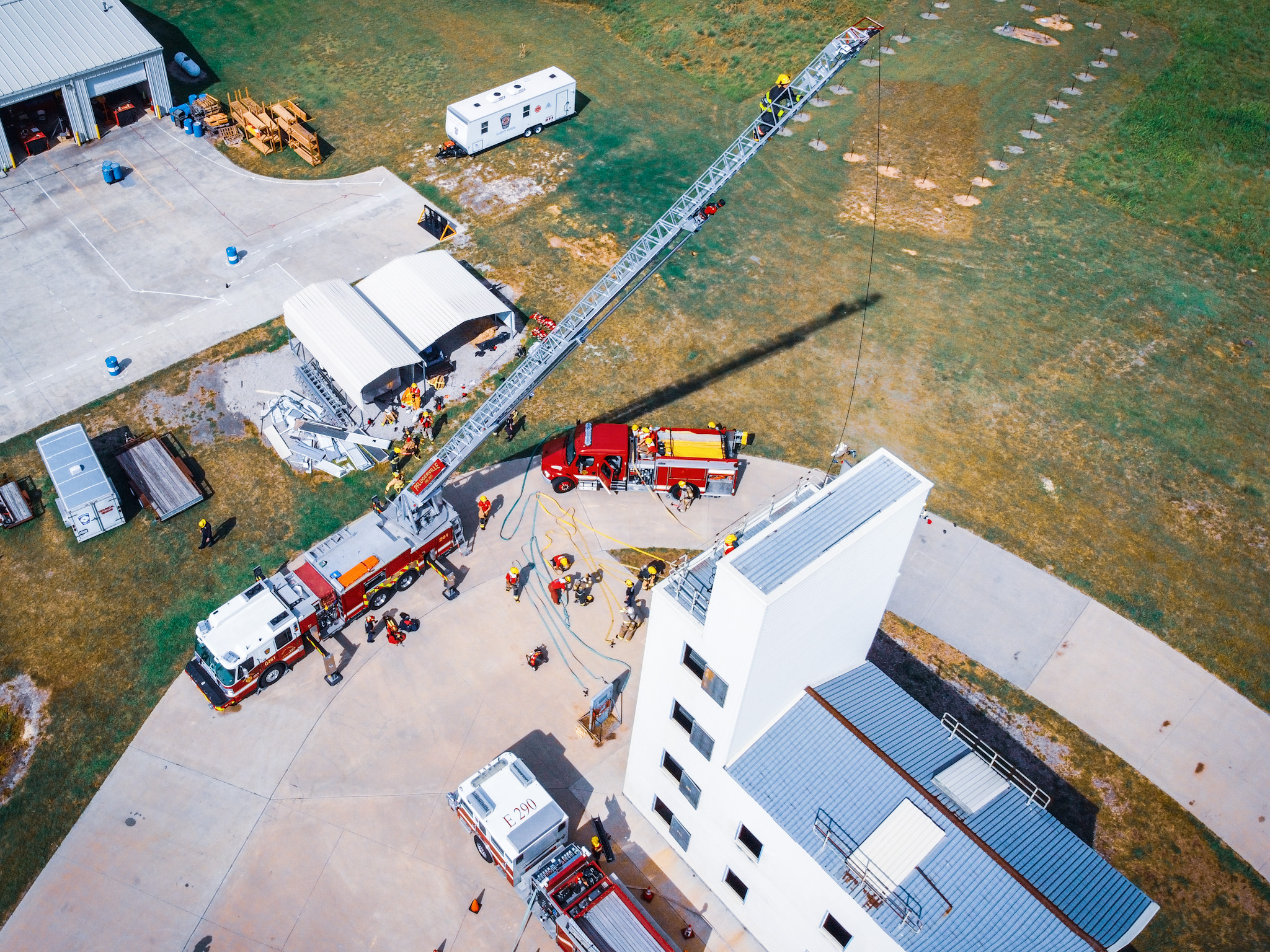How Athlete Autonomy Can Foster High Performance
I am going to preface this discussion with another quote as I had done in my prior article to kick off the theme for what is to come. To paraphrase Joe Kenn: “The one guarantee that we can make in the weight room for our athletes is confidence.”
In my opinion, this line is paramount simply due to the fact that we, as strength coaches, cannot guarantee those we serve will invariably succeed on the field of the play. It is not that easy, and there are many variables (stressors) to consider in the grand scheme of athletic performance that need to be considered. In my previous article, I discussed the importance of discovering a definition of the term ‘high performance’ within the context of one’s environment and incorporating a solutions-driven mindset to allow one’s definition to become a reality.
The purpose of this article is to continue to share strategies and solutions with strength and conditioning coaches in the team sport setting, and how TeamBuildr can help you to facilitate an efficient, robust and collaborative system. Let’s take a look at how we can further improve the confidence in our athletes with a simple, yet extremely effective means: athlete autonomy.
Now, where am I going with this? Am I advocating that we let our athletes do whatever they want? Not at all. Where I am going to go with this is to discover how we can promote a more active learning environment to improve athlete perception of control, thereby improving confidence and intent.
Intent is everything
One can create the “most effective”, evidence-based program on the planet that hits all the proverbial ‘nails on the head’, but that by no means that is guaranteed to work. Hence, there is not such thing as a ‘perfect program’. What is important is discovering a program that reinforces intent for both the team as a whole, and the individual without ripping your hair out with individualization. Intent drives outcomes; it drives the adaptations that you desire and allows you to assess your program with a deeper lens.
Now, I have spoken in past regarding the importance of creating, and successfully implementing a sustainable system to foster long term growth of your program as a whole. Athlete autonomy, planned intelligently, fits right in here to improve the intent that your athletes will train at, to subsequently drive better outcomes in all facets of your program. All we want is progress. Progress for ourselves, our athletes and our environment. For this to happen, adaptation needs to take place. For adaptations to take place, the athletes need to train with INTENT. Athletes will train with intent if they enjoy the experience that you provide them as their coach, and know that you have their best interests in mind.
Creating athlete autonomy in the weight room can be one of the greatest investments that you can make within your program. Why? Let’s take a look below:
1. Allows athletes to select exercises that work best for them (at this time) to execute said exercises with better intent to drive better outcomes.
2. Allows a better sense of control for the athlete, which allows for ownership to take place throughout their respective training process to produce desired outcomes that have been prescribed.
3. With control comes confidence and self-efficacy. Key facets to consider when it comes to the oft thrown around term ‘buy in’ for your athletes. This will markedly improve the athlete’s sense of purpose within your program.
4. Efficiency: Coaches can prescribe based on principles, addressing adaptation in mind that requires development, whilst keeping time spent in the weight room focused on fine tuning athlete competency as they are providing exercises they are more confident in executing.
5. Facilitate growth of a program design system to improve time spent outside of the weight room programming.
6. Individualization based on the exercise(s) that the athlete selects from a short list that you have provided to them.
7. Confidence in coaching staff ability to become a part of the program design process.
8. Remote training opportunity to build your business and brand to scale to more people. Ie. Help more!
9. Not marrying exercises to the athlete, but rather giving the athlete the option and learning opportunity to try each, and discover for themselves what may work for them. This then opens healthy and realistic dialogue with the athlete based on both yours and their goal(s) to look out for their best interest.
Now these are simply a few of the benefits that you can reap through implementing this strategy that will be presented below. From benefiting yourself to lead better and more efficiently, to providing athletes with active learning opportunities, as well as providing your assistants with confidence to design and implement programs, there is much to look forward to!
How do we do this?
Let’s get to the bread and butter now. TeamBuildr has proved once again to be an invaluable asset for coaches! Now, here is the feature that will:
1. Save you time
2. Expand your revenue stream
3. Improve athlete confidence and trust
4. Build out a clean system of program design and progression
5. Creatively navigate your use of teambuildr to better serve yourself and athletes.
This fantastic Teambuildr feature is: Tags.
Simple, right?
Well, its atomic in its nature to help you! Below I have provided a few simple, practical strategies to help you immediately!
Putting it all together
Let’s keep things simple with a front load of creating phasic progression tags to start. Head on over to your master exercise database and begin to categorize your lifts as (an example): Movement orientation:
- Squat
- Push (separate vertical and horizontal/upper and lower)
- Pull (separate vertical and horizontal/upper and lower)
- Jump (bodyweight or low-load)
- Throw
- Explosive (olympic weightlifting variant or barbell/hex bar loaded jump)
- Single leg (separate push and pull)
- Mobility (upper, lower, joint specific)
The opportunities are truly endless here, not to get exhaustive with it, but be open to categorizing movement any which way that you would like so that it is simple, practical and accessible for you when it comes to designing your program. Mobility categorizations will allow you to control the selection of ‘fillers’ for athletes to perform between ‘performance’ sets to efficiently navigate the program and improve positioning and intent in following sets without having to sit down.
Phase:
- 1,2,3,4, etc.
This will allow you to strategically present a phase-like progression of movements based on the context within our environment. If an exercise is prevalent for more than one phase, TeamBuildr allows you to put as many tags on an exercise as you would like. Remember, whatever is easiest and most practical for you to get efficient in your process.
Options and how you can benefit from them: To allow you to not go overboard with this, and to create a realistic opportunity to take advantage of this system, allow for three options for each phase for each movement categorization for athletes to select from. This will allow you, as the coach, to have control over the flow of the environment, as well as progression based on adaptation that you desire.
Have a day or week where you take athlete through a ‘clinic’ to learn from the options that you have provided for all or some of your lifts. Not all exercises need to be in this format, but it helps to have a few movements that follow this model. Teach the athletes the variety of exercises available to them, allow them to try all, and assess what they are feeling most confident with. This will be their exercise for the month based on the prescription you have provided.
This can alternatively provide you with another opportunity: for the athlete to revisit a different exercise later in the program that day. For example, maybe the hang clean may not be the best option for the athlete right now to maximize intent in driving a solid response for a specific adaptation, but the trap bar jump allows for more efficiency. If you or the athlete want to hang clean, place it in the warm up as part of a complex.
At the end of the phase, revisit the ‘clinic’, monitor the adaptation of the team with regard to the three options (trap bar jump vs hang clean vs barbell jump squat for example) and assess what group performed best! This is a phenomenal opportunity to assess your program effectiveness within your specific environment to see where adaptations may best present themselves based on exercise selected. This is a pragmatic opportunity to implement evidence-based practice in your weight room to build your experience and guide your process moving forward!
Trying to fit a square peg into a round hole when it comes to exercises for your athletes is 1) not practical, 2) does not benefit yourself or the athlete in the long run and 3) does not improve the intent of training, therefore adaptations that you desire may not present themselves. With 2-3 options for each movement categorization, you allow athletes the opportunity to select one, but be open to choosing others in their process to maximize intent and delivery.
Remember, there are no guarantees. Select what maximizes intent in the weight room to drive confidence, so that it may improve confidence in the field of play. Being married to certain exercises will only disrupt efficiency and vital training time. Get the return on the investment of time in the weight room, and drive the program!
Program Design
Now that you have the tags in place, you are ready to begin putting your system together! Simply click ‘add exercise’ and in the top right corner, click ‘tag select’ on your dashboard.From here, you can begin designing your program.
Final Thoughts
It all comes down to confidence. With a system that thrives with athlete autonomy and let’s this work for and not against one, the benefits go beyond what has been discussed today. There are tons of opportunities to improve ourselves and our systems to better serve us, our coaching staffs, and athletes to allow our definition of ‘high performance’ to take form and become a force.It starts with athletes maximizing time spent in the gym to adapt. Programming efficiently in this manner will allow coaches to spend more effective time where it matters, in the weight room, and deliver more efficiently in a scalable manner. Let’s continue to work together to share solutions-driven strategies to better serve!
Subscribe to our blog
Subscribe to receive the latest blog posts to your inbox every week.
Related posts

How to Coach Firefighters: Building Strength, Endurance, and Resilience

How to Price Your Online Training Programs


